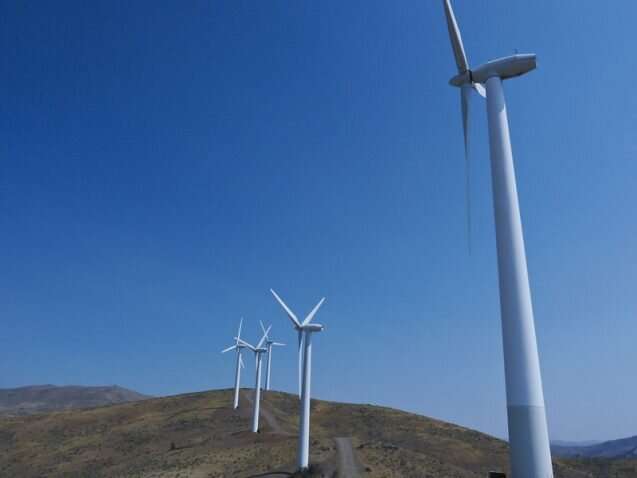Are wind and solar power really more expensive and less reliable?

Not that long ago, critics of renewable sources of energy had a point when they claimed wind and solar power cost more and were less dependable than fossil fuels, mostly because they depend upon the wind blowing and the sun shining.
But that is changing. The steady progression of scientific achievements are making wind and solar as cost-efficient to produce as fossil fuels, and increasingly competitive at storing energy as well.
"The myths about renewable energy are based on prices and performance that are typically out-of-date," said Bruce Usher, a professor of professional practice at Columbia Business School, where he teaches on the intersection of financial, social and environmental issues.
Advancements have both improved performance and lowered costs, said Steven Cohen, former long-time executive director of the Earth Institute at Columbia University and now senior vice dean the University's School of Professional Studies.
"Just as we saw with computers, the more time engineers spend on these issues, the better the technology becomes," he said.
Meanwhile, the myth abides.
Renewables vs. extreme weather
Despite claims to the otherwise, renewables are no less reliable than other power sources during extreme weather events.
In Texas, which is the only state with its own power grid, Gov. Greg Abbott falsely blamed wind and solar power for last winter's failure of the state's energy grid during severe storms that saw power generation disrupted and natural gas pipelines freeze. Former Energy Secretary Rick Perry piled on, claiming that the incident exposed the danger of relying of renewable energy.
A federal study actually found that renewable sources outperformed fossil fuel production during the incident, which was mostly caused by failures of equipment inadequately protected from the freezing temperatures, regardless of the energy source. National Public Radio concluded it was a systemwide failure to prepare for extreme cold.
Cohen said the case in Texas was also ultimately a failure of regulation.
"Due to the deregulated nature of the Texas power system, windmills which can easily be protected from cold were not protected," he said. "Windmills in northern Europe and the U.S. have no issue operating in the cold."
In California, other critics of renewables made similar claims last summer during heatwave-related blackouts, even after a state study found that the main causes were climate change-induced extreme weather, inadequate resources and planning processes, along with market practices—all unrelated to renewables.
"In California the issue has also been old transmission equipment, which causes forest fires and then is damaged during fires," Cohen said.
Perhaps the common denominator among the energy failures caused by a frozen Texas and a blistering California is that neither state is prepared for the challenges presented by climate change.
Moving toward better storage and transmission
In California, the main issue wasn't a lack of power generation, but not enough investment in batteries to store wind and solar power.
Usher points to advancements in battery technology as what has made renewable energy more reliable.
"Wind and solar have always been reliable generators of power," Usher said, "when it's windy and sunny." It was the storage half of the equation that, in the past, made them less dependable.
"Wind and solar projects are increasingly being paired with energy storage—primarily in the form of batteries—making renewable sources more reliable by addressing the intermittency of wind and solar power generation," Usher said.
Along with more and better storage, both experts identified another key to increasing renewable energy production: moving the electricity from where it is generated to where it is needed. High-capacity transmission lines will help, Cohen said.
Funding the future of energy
Usher said that government tax incentives can play an important role in advancing battery technology and updating energy infrastructure, for example. But Cohen thinks the free market is the bigger engine here.
Most of the resources will come from energy utilities and consumers who will benefit from a more efficient and reliable energy system once renewables, microgrids and distributed generation of energy is combined with wind and solar farms, he said.
Cohen noted in a recent blog post that we're already seeing a surge in climate-friendly stocks and a declining interest in fossil fuel companies, which are losing ground to renewable energy firms in attracting new capital.
Nonetheless, neither expert predicts renewables taking the place of fossil fuels any time soon.
"I think the idea that there is some number or quick fix is delusional," Cohen said. "This is a transition that will take a generation to complete."
Usher adds that "Anyone who thinks renewable power isn't the future of energy isn't looking at the fundamental trends that are nearly certain to create strong tailwinds for the industry for the next 30 years: lower costs plus increasing demand from electric vehicles and demand to decarbonize. The energy transition from fossil fuels to renewables will almost certainly happen, but over 30 years, not overnight."
This story is republished courtesy of Earth Institute, Columbia University http://blogs.ei.columbia.edu.















